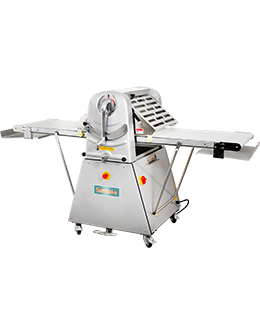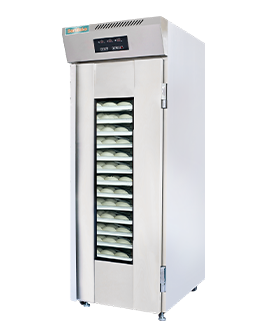Dough Spiral Mixer
What is a Dough Spiral Mixer?

Definition
How It Works
Basic Components
History and Evolution
Origins
The concept of mechanical kneading dates back to the early 20th century, with the introduction of early dough mixers. The spiral mixer, as we know it today, gained popularity in the mid-1900s, especially among commercial bakeries seeking efficiency.
Technological Advancements
Modern spiral mixers now include features like digital controls, variable speed settings, and larger capacities. Innovations focus on improving dough quality, reducing energy consumption, and enhancing user safety.
Types of Dough Spiral Mixers
Manual vs. Motorized
- Manual: Rare nowadays, used mainly in small, traditional bakeries.
- Motorized: The standard in most bakeries; offers various speeds and capacities.
Small vs. Commercial
- Small (Benchtop): Suitable for home bakers or small cafes.
- Commercial (Floor-standing): Designed for high-volume production, with larger bowls and powerful motors.
Key Features of a Dough Spiral Mixer
Spiral Arm Design
The spiral arm's shape and material influence kneading efficiency. High-quality mixers have a durable, corrosion-resistant spiral that can handle tough doughs like sourdough or pizza.
Bowl Capacity
From 20 liters for small setups to over 200 liters for large bakeries, choosing the right capacity ensures you can meet your production needs.
Speed Settings
Most mixers offer multiple speeds, allowing for gentle mixing or vigorous kneading, depending on the dough type.
Advantages of Using a Dough Spiral Mixer
Consistency and Quality
Manual kneading can be inconsistent; a spiral mixer ensures uniform dough every time, which is vital for product quality.
Time and Effort Saving
What used to take hours of manual labor now takes minutes, freeing up your time for other tasks.
Enhanced Dough Development
Spiral mixers develop gluten effectively, resulting in better rise, texture, and flavor.
Applications of Dough Spiral Mixers
Bakeries
Ideal for bread, rolls, and pastries, ensuring large batches are uniformly kneaded.
Pizzerias
Perfect for making elastic pizza dough, crucial for thin crusts and deep-dish styles.
Food Industry
Used in large-scale production lines for consistent dough products.
How to Choose the Right Dough Spiral Mixer
Capacity Needs
Assess your daily production volume. Small setups may need 20-50 liters, while large bakeries might require 200 liters or more.
Power and Motor Performance
A more powerful motor handles dense doughs with ease but comes at a higher cost.
Budget Considerations
Balance your needs with your budget. While high-end models are more expensive, they offer durability and efficiency.
Brand Reputation
Opt for reputable brands known for durability and after-sales service.
Operating and Maintenance Tips
Proper Usage
Always follow the manufacturer’s instructions, especially regarding mixing times and speeds.
Cleaning
Regularly clean the bowl and spiral arm to prevent dough buildup and ensure hygiene.
Troubleshooting
Watch for unusual noises, vibrations, or overheating—signs that maintenance or repairs are needed.
Safety Precautions
Safe Handling
Ensure the mixer is turned off before cleaning or inspecting.
Emergency Stop
Familiarize yourself with the emergency stop button to prevent accidents.
Protective Gear
Use gloves or protective equipment when cleaning or handling moving parts.
Cost and Budgeting
Price Range
- Small models: $1,000 - $3,000
- Commercial models: $5,000 - $20,000+
Cost-Effectiveness
Investing in a durable, high-capacity mixer can save money in the long run by reducing labor and improving product quality.
Popular Brands and Models
Industry Leaders
- Hobart
- Globe
- Sirman
- Famag
Recommended Models
- Hobart H-600
- Globe SP-60
- Sirman SPIRAL 50
Future Trends in Dough Spiral Mixers
Smart Technology
Integration of IoT for maintenance alerts and process monitoring.
Automation
Automated controls for precise baking processes, reducing human error.
Energy Efficiency
Designs focusing on reducing power consumption while maximizing performance.
Conclusion
A Dough Spiral Mixer is an indispensable tool for anyone serious about baking. It combines efficiency, consistency, and quality, transforming the way dough is prepared. Whether you're running a small bakery or managing a large production line, choosing the right spiral mixer can elevate your baking game to new heights. Remember, investing in quality and understanding your needs will ensure you get the best out of this fantastic equipment.
FAQs
Q1: How long does it take to knead dough in a spiral mixer?
A: Typically, it takes about 10-15 minutes depending on the dough type and capacity.
Q2: Can a dough spiral mixer handle sticky or dense doughs?
A: Yes, high-quality spiral mixers are designed to knead tough doughs efficiently.
Q3: Is it necessary to preheat or prepare the mixer before use?
A: No, but ensure parts are clean and properly assembled before operation.
Q4: How often should I clean my dough spiral mixer?
A: After every use to maintain hygiene and prevent dough buildup.
Q5: Can I use a dough spiral mixer for non-dough items?
A: While primarily designed for dough, some models can handle other mixtures like batters or fillings, but check manufacturer guidelines.
Ready to elevate your baking? A dough spiral mixer might just be the secret ingredient you’ve been missing!
- *Name
- *Title
- *Content
- Name:
- Frank
- Tel:
+86-18862554041
- Email:
- sales@sambake.com
- Address:
- Xinxiang Industrial Park,Wuxi City,Jiangsu China






